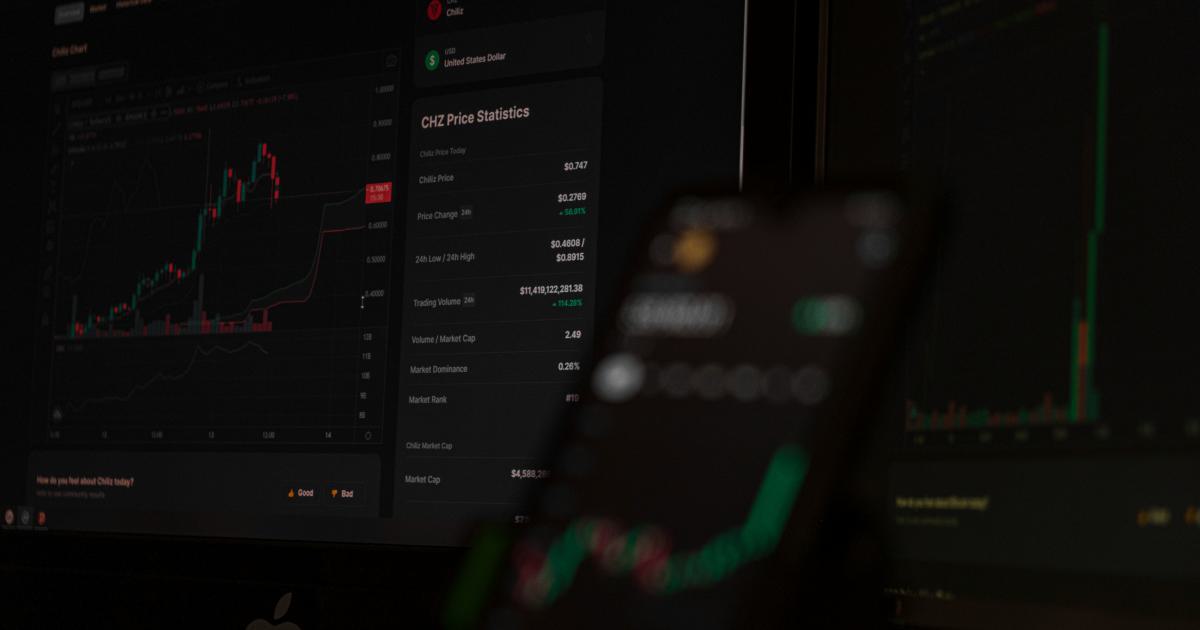Choosing the Best Timeframe: Intraday vs Swing Pairs Trading

Pairs trading has emerged as one of the most versatile strategies in the realm of financial markets. For many traders, the debate of intraday vs swing pairs trading frequently surfaces, underlining critical differences between the two timeframes and signaling their unique impacts on trading styles, risk management, and strategy execution. This article delves into the nuanced world of pairs trading, comparing short-term intraday maneuvers with the more extended swing trading operations. With detailed explanations, real-world examples, actionable solutions, and expert tips, we aim to provide a comprehensive guide that empowers traders to choose the timeframe that best matches their objectives and risk tolerance.
Understanding Pairs Trading
Pairs trading is a market-neutral strategy that takes advantage of pricing discrepancies between two historically correlated instruments. By buying undervalued securities and simultaneously selling overvalued ones, traders hope to profit from the convergence of prices. This basic principle applies regardless of whether the timeframe is intraday (executed within a single trading day) or swing trading (holding positions over several days to weeks). The choice between intraday vs swing pairs trading significantly affects several elements including liquidity, volatility, risk exposure, and required capital.
The Core Concept
At its foundation, pairs trading relies on statistical methods that identify when two securities have diverged beyond their typical historical relationship. This divergence is expected to eventually revert, providing a profit opportunity. Whether you execute the trade over minutes or days, success depends on correctly identifying the spread, appropriate risk management, and timely execution of entries and exits.
Key Components:
- Market Neutrality: Pairs trading can reduce systematic risk since bets are spread equally across two positions.
- Spread Analysis: Monitoring the spread between pairs is essential when confirming the timing for entries and exits.
- Risk Controls: Stop-loss orders, position sizing, and continuous adjustments based on volatility and market conditions are vital.
Intraday Pairs Trading
Intraday pairs trading takes the basic concept of pairs trading and applies it to strategies where positions are opened and closed within a single trading day. This approach requires swift decision-making, high market liquidity, and tight risk controls.
Characteristics of Intraday Trading
Intraday trading focuses on taking advantage of small movements within the market. Because positions are closed by the end of the day, overnight risks are eliminated. This fast-paced environment demands that traders monitor market conditions continuously, relying on real-time data, sophisticated charting software, and high-frequency trading algorithms.
Advantages:
- Elimination of Overnight Risk: Since all positions are closed before the market closes, the trader is not exposed to after-hours volatility.
- Increased Liquidity: Trading on intraday charts usually involves frequently traded, liquid stocks or currency pairs, ensuring ease of entry and exit.
- Quick Profits: Opportunities for rapid small gains accumulate over the day, leveraging the potential for multiple trades.
Disadvantages:
- Higher Transaction Costs: Frequent trading can result in substantial commissions and fees that reduce overall profitability.
- Stressful Environment: The need for constant monitoring and rapid decision-making may not be suitable for all traders.
- Technical Dependency: Intraday success heavily relies on technical analysis tools and algorithmic trading platforms.
Real-world examples of intraday pairs trading often involve sectors where price movements are tightly correlated yet can diverge momentarily due to market rumors or brief technical anomalies. For instance, during earnings seasons, two technology stocks might split temporarily due to investor sentiment, creating an ideal intraday arbitrage opportunity for a pairs trader.

Strategic Considerations
When considering intraday pairs trading, traders must assess several factors:
Time Commitment: Continuous market observation is essential. Automated systems can help, but they require careful calibration.
Market Conditions: Fast-moving markets can sometimes lead to false signals. Constant re-evaluation of the spread’s behavior is crucial.
Execution Costs: Rapid trades increase cumulative transaction costs, so precision is key in order to sustain profitability.
Tools and Technologies
Modern intraday traders leverage a variety of tools:
- Algorithmic Trading Platforms: These can execute trades based on preset conditions, ensuring speed and accuracy.
- Real-Time Data Feed: Immediate access to market data is indispensable for making informed, split-second decisions.
- Technical Analysis Software: Advanced charting tools to analyze price trends, identify divergence patterns, and monitor liquidity.
By carefully integrating these tools into their trading routine, intraday traders can mitigate risks associated with rapid market movements and capitalize on transient arbitrage opportunities.
Swing Pairs Trading
Swing pairs trading encompasses strategies that hold positions for several days to even weeks, allowing traders more time for the market to correct mispricings identified between correlated pairs. This approach often appeals to those who prefer a less frenetic trading schedule while still harnessing the principles of pairs trading.
Characteristics of Swing Trading
Swing trading focuses on capturing gains based on anticipated market movements over a longer timeframe than intraday trading. This extended period gives the market time to revert to its mean, allowing the pair’s prices to converge.
Advantages:
- Reduced Stress Level: Since trades are not executed on a minute-to-minute basis, swing trading often has a slower pace, making it appealing to traders who cannot dedicate full-time attention to the markets.
- Lower Transaction Frequency: Fewer trades mean lower transaction costs, which can enhance the profitability of each trade, despite the longer holding period.
- Deeper Analysis: More time allows traders to perform comprehensive technical and fundamental research. This analysis includes broader historical data and multi-day trends that may not be apparent in intraday charts.
Disadvantages:
- Overnight and Weekend Risk: Positions held overnight or over weekends are subject to market gaps or unexpected news that can dramatically affect security prices.
- Delayed Profit Realization: The waiting period for the spread to converge can tie up capital for several days or weeks.
- Potential for Large Movements: Swing trading environments can sometimes see larger price swings, which may lead to increased volatility.
Strategic Framework for Swing Trading
Swing traders adopt a more patient strategy, blending technical analysis with fundamental insights. They often evaluate moving averages, relative strength indices, and other indicators that are less effective in intraday scenarios. Additionally, fundamental analysis plays a more substantial role, as traders may consider earnings reports, economic data, and industry news that can affect moving averages over several days.
Example Case Study:
Consider two retail stocks that typically move together but experience a temporary divergence due to a discrepancy in daily sales reports. A swing trader would seize the opportunity by entering opposite positions on the two stocks, anticipating that market corrections over the next several days will normalize the relationship. The ultimate profit is realized when the convergence of prices occurs, even if it takes multiple days.

Managing Risk in Swing Trading
Risk management in swing trading is crucial due to the longer exposure time:
- Stop-Loss Orders: It is essential to set stop-loss orders to protect against unexpected market moves.
- Diversification: A portfolio of various pairs can help spread risk since not every pair will move in a predictable fashion.
- Position Sizing: Monitoring position sizes based on volatility and available capital ensures that no single trade can significantly derail overall results.
- Periodic Adjustment: Regular review of open positions against evolving market conditions ensures that trades remain aligned with initial hypotheses.
Comparative Analysis: Intraday vs Swing Pairs Trading
When weighing intraday vs swing pairs trading, traders must consider several distinct factors that influence the effectiveness and suitability of each strategy.
Speed and Decision-Making
Intraday trading demands rapid responses and quick decision-making based on real-time market movements. In contrast, swing trading places an emphasis on broader trends and a more deliberate approach, where traders can afford to wait for their setups to fully develop.
Risk Exposure and Market Volatility
Risk profiles differ significantly between the two:
- Intraday Trading: Eliminates overnight risks but exposes the trader to constant market fluctuations within short timeframes. The frequent entry and exit points can lead to heightened transaction costs.
- Swing Trading: Involves holding positions over several days, making it subject to overnight and weekend risks. However, this approach tends to smooth out volatility through trend-based analysis and reduces the frequency of trades.
Capital Requirements and Trading Costs
The capital required and the associated costs differ:
- Intraday Trading: Typically requires a larger capital base due to higher leverage and frequent transactions. The associated costs include higher commission fees and platform charges.
- Swing Trading: Because trades are less frequent, transaction costs are typically lower. However, capital is locked in for a longer duration which might affect liquidity.
Technological and Analytical Demands
Both strategies have different technological and analytical requirements:
- Intraday Traders: Rely heavily on high-speed data feeds, automated trading algorithms, and real-time charting software.
- Swing Traders: Place greater emphasis on longer-term charts, historical data, and a combination of technical and fundamental analysis.
Case Studies in Comparative Context
Consider a scenario where two highly correlated stocks diverge on a trading day due to unexpected news. An intraday trader can capitalize on this divergence by executing swift trades, capturing small profits multiple times in one session. Conversely, a swing trader might analyze the broader market factors, step back from immediate market noise, and plan a trade that spans several days, focusing on a larger convergence as market sentiment stabilizes.

Expert Insights
Industry experts agree that both approaches have their merits. Seasoned traders often adapt their strategies based on market conditions:
- Flexibility: Some traders maintain a hybrid approach, combining intraday trades during periods of high liquidity with swing trades when longer market trends are evident.
- Adaptive Strategies: As market volatility changes, traders might switch from one method to another, leveraging the unique benefits of each timeframe.
- Technology Integration: Regardless of the approach, integrating the latest trading technology is essential for monitoring trends, executing trades swiftly, and minimizing risks.
Factors to Consider When Choosing a Trading Timeframe
Deciding between intraday vs swing pairs trading is largely dependent on individual trading styles, market conditions, and overarching investment goals. Here are some critical factors to weigh:
1. Risk Tolerance
Assess your own risk tolerance:
- For risk-averse traders, the stability of swing trading might be preferable as it allows for a more measured response to market movements.
- Those who thrive on high-energy environments and can manage stress may find intraday trading more aligned with their style.
2. Time Commitment
Evaluate the amount of time you can dedicate:
- Intraday trading requires constant monitoring, making it best suited for full-time traders or those with access to automated systems.
- Swing trading offers more flexibility, allowing traders to balance market analysis with other professional or personal commitments.
3. Trading Capital
Capital availability can dictate the suitable approach:
- A larger capital base might be necessary for intraday trading to mitigate the impact of increasing commission costs.
- Swing trading, with fewer trades, might be more manageable for those with modest capital, though funds remain tied up for extended periods.
4. Market Conditions and Volatility
Market conditions heavily influence the activity:
- In volatile markets, intraday trading opportunities increase; however, the risk of rapid losses also rises.
- During periods of lower volatility, swing trading might yield more reliable trends, as the market tends to move in more sustained directions.
5. Technology and Data Access
Ensure you have the right tools:
- Intraday traders benefit immensely from high-speed data feeds and algorithmic trading platforms.
- Swing traders rely on comprehensive charting software and a blend of technical and fundamental data analysis to identify longer-term trends.
6. Trade Frequency and Commission Costs
Consider operational costs:
- Intraday trading often results in high trade frequency, thereby escalating commission costs.
- Swing trading, with its fewer transactions, typically incurs lower overall costs per trade execution.
Actionable Solutions and Best Practices
To successfully choose and implement either trading timeframe, traders can adopt these best practices:
Developing a Clear Trading Plan
- Define your objectives and determine the acceptable risk levels for each trade.
- Establish clear criteria for entering and exiting trades. Whether trading intraday or swing pairs, having a predefined plan can help reduce emotional biases.
Continuous Education and Backtesting
- Regularly update your knowledge on market trends and trading methodologies.
- Invest time in backtesting strategies using historical data. This helps in understanding how pairs trading strategies perform under varying market conditions for both intraday and swing setups.
Risk Management Techniques
- Apply tight stop-loss orders to protect positions.
- Use position sizing strategies to safeguard against excessive losses.
- Diversify pairing selections to spread risk across different sectors or asset classes.
Enhancing Technological Infrastructure
- Consider investing in robust trading platforms equipped with real-time alerts and automated execution capabilities.
- Use simulation environments to practice both intraday and swing trading strategies without exposing yourself to excessive real risks.
Seeking Professional Guidance
- Consider joining trading communities or even consulting with professional traders who specialize in pairs trading.
- A mentor can provide insights, new techniques, and a realistic perspective on managing both short and long-term trades.
Regular Strategy Reviews
- Conduct periodic reviews of your trades. Analyze both successful trades and losses to refine your strategy.
- Adjust your approach based on market shifts and changes in your personal trading performance.
Conclusion: Making an Informed Choice
Choosing between intraday and swing pairs trading depends on a host of factors including your risk tolerance, time commitment, capital availability, and personal trading style. While intraday pairs trading offers rapid gains and minimal overnight risk, it requires a high level of focus, speed, and effective technological support. On the other hand, swing pairs trading provides the opportunity for deeper analysis and can be less stressful, although it subjects traders to overnight and weekend risks.
Ultimately, traders should consider:
- Their individual lifestyle and dedication to monitoring the markets.
- The operational costs and technological requirements inherent in each approach.
- The broader market conditions and how these align with either short-term or longer-term strategies.
By understanding the detailed nuances of both timeframes and evaluating your personal trading goals and resources, you gain the flexibility to design strategies that suit your needs's best and adapt as market conditions evolve.
In an ever-dynamic financial landscape, maintaining adaptability and continuous learning is the key. Whether you lean toward the rapid pace of intraday pairs trading or the measured approach of swing trading, ensuring proper risk management, leveraging technology, and staying updated on market trends will empower you to navigate volatility confidently. With robust strategy adjustments and a clear plan, the debate of intraday vs swing pairs trading transitions from a difficult choice into a customized pathway for optimized trading success.
As markets fluctuate, both strategies have unique benefits that, when understood and applied judiciously, can coexist within a comprehensive trading portfolio. The most successful traders often blend techniques from both approaches, customizing their trading practice to capitalize on forthcoming market opportunities while mitigating inherent risks.
To summarize:
- Intraday trading is suitable for those who thrive in fast-paced environments with high liquidity.
- Swing trading is ideal for investors who can afford to wait for a broader market correction and prefer lower transaction counts.
- Constant strategy evaluations and adaptation to market conditions remain essential to sustained success in pairs trading.
Ultimately, the decision between intraday vs swing pairs trading should be an informed one. Continuous refinement of your trading skills, understanding of market dynamics, and careful evaluation of your personal circumstances can lead to long-term profitability and resilience in the sophisticated world of pairs trading.
Happy trading, and may your strategies yield consistent success!
Unleash the Power of Automated Trading Analysis
Are you struggling to keep up with the fast-paced trading world? TrendSpider empowers you with cutting-edge tools for optimal strategy execution.
Our automated technical analysis suite eliminates guesswork, backtests strategies, and delivers real-time alerts, saving you valuable time and effort.
Shion Tanaka
64 posts written





